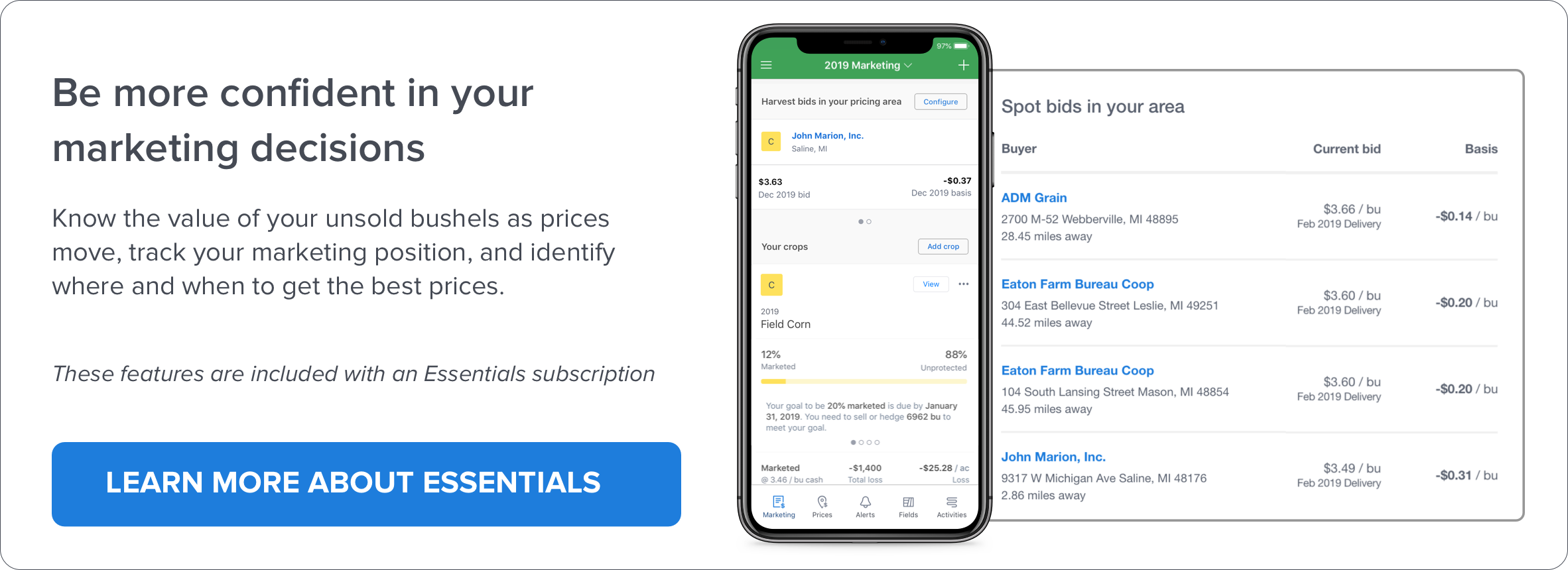This series is focused on why creating a plan for your season is an important aspect of financial management on the farm. In Part I, Ryan Mosier, a corn and soybean farmer from Central Illinois, shares how he creates a plan for his season.
For us, a plan is the start of the year for farming. Even though it can change, we usually have a good idea of what we're planning before the new year even begins. During this time, we really start to lay down the foundation of what we're going to do for the upcoming year. Although we do modify that plan from time-to-time, our seed selections and fertility decisions are usually all made sometime in August or September. That way, we already know what inputs need to be applied to which acres, we can get VRT maps to our retailers in a timely fashion, and when we're in harvest we can make quick marketing decisions.
Developing a good plan makes you a long term thinker. If you know you’ll be profitable for this season you can start thinking about plans for next season, like adding additional acreage, building an extra bin, updating equipment, and other decisions you’ll be making.
Being able to plan ahead really gives you a competitive advantage.
Building a Seasonal Plan
Creating a budget is our first step. Usually, we don’t know all of our input costs at this time, but we always have an idea of what we're going to do and we modify the budget as we go.
Having a plan established early helps us lock-in certain costs. Usually, our seed is locked-in sometime in August or September to maximize the discount schedule. It can also be modified right up until we plant, so if we really don't want to plant that variety we can change it.
Around November, we start looking at our budget and seeing what the futures prices are. That’s when we can tell where our bottom line will be for the next season.
Now that we're getting into the process of planting our 2017 crop, we’re already starting to think about 2018 in the back of our minds.
Accounting for Change
When you’re farming, you're always going to have changes. You might have less acres one year, but other years you might have more—that's just the nature of farming. Having a plan allows us to spend less time worrying about day-to-day management decisions, like if it’s worth the fungicide application when our margins are so thin.
With our plan in place, we can ask ourselves, “Are we going to get enough return on investment to do that?” and easily know if we’re making the right decision.
Grain Marketing & Cash Flow Management
Our cash flow management is really more about marketing than it is about purchasing inputs, and our marketing decisions are based around our costs and where our costs are. We typically like to get most of our crop marketed in the December–February time frame. Usually, we make some sales early in the year, because we know we have costs coming down the line that need to be paid for.
For example, let’s look at our 2017 crop. We'll sell that in bins that we try to get moved by December. For our 2018 crop, we’ll want to get some of that crop sold as well so that when harvest starts we already have some cashflow coming in. Basically from the time harvest starts until the planters roll, we want to get that cash flow coming in.
Crop Insurance
For the last four or five years we've pretty much taken the highest level of revenue protection crop insurance. 85% with harvest price has paid dividends to us. We don't always get our premium back, but we're always getting a claim. The remaining 15% of our corn crop that's unsold we like to cover with some sort of options strategy to get that locked in. Then, if and when corn prices are back in the black, we start to sell up to our crop insurance levels.
That’s a simple marketing plan, and it's a proven marketing plan. With this plan, even early in the year, we always know how the season’s going to turn out from a profitability standpoint.
Room for Improvements
We're always statistically trying to give ourselves the best opportunity to turn a profit. You're going to have hiccups along the way, but you always try to put the odds in your favor. You might not always make the right decision, but at least you know what the effect is on your cost structure and potentially your profitability.
Really, it comes down to knowing your return on investment and developing a plan based on solid data.
-2.png)

